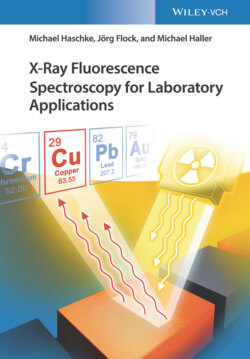Читать книгу X-Ray Fluorescence Spectroscopy for Laboratory Applications - Michael Haschke, Jörg Flock - Страница 31
3.2.3 Infinite Thickness
ОглавлениеThe infinite thickness of a sample is another important parameter to consider, in particular for the analysis of layered samples (see Chapter 14). Like the information depth it depends on the element in question, other elements in the matrix, and the respective measuring geometry but it is largely independent of the spectrometer type. Typical dinfinite is assumed as three times dinformation, since the usable thickness range cannot be expanded to infinity, because the slope of the calibration curve for thick layers approaches asymptotically the infinite value. Infinite thickness does not mean that no other radiation can penetrate this layer – radiation of higher energy will not completely be absorbed in layers of this thickness. The infinite thickness, for example, of Si is about 15 μm, but only approximately 21% of the fluorescence radiation of Cu will be absorbed in this layer. In the matrix, backscattered Cu radiation can even enhance the fluorescence intensity of Si.
Figure 3.3 Cd intensities measured on polymer samples of different thicknesses.
Source: Courtesy of S. Hanning, FH Münster.
Figure 3.4 Analyzed volume limited by the measurement geometry.
